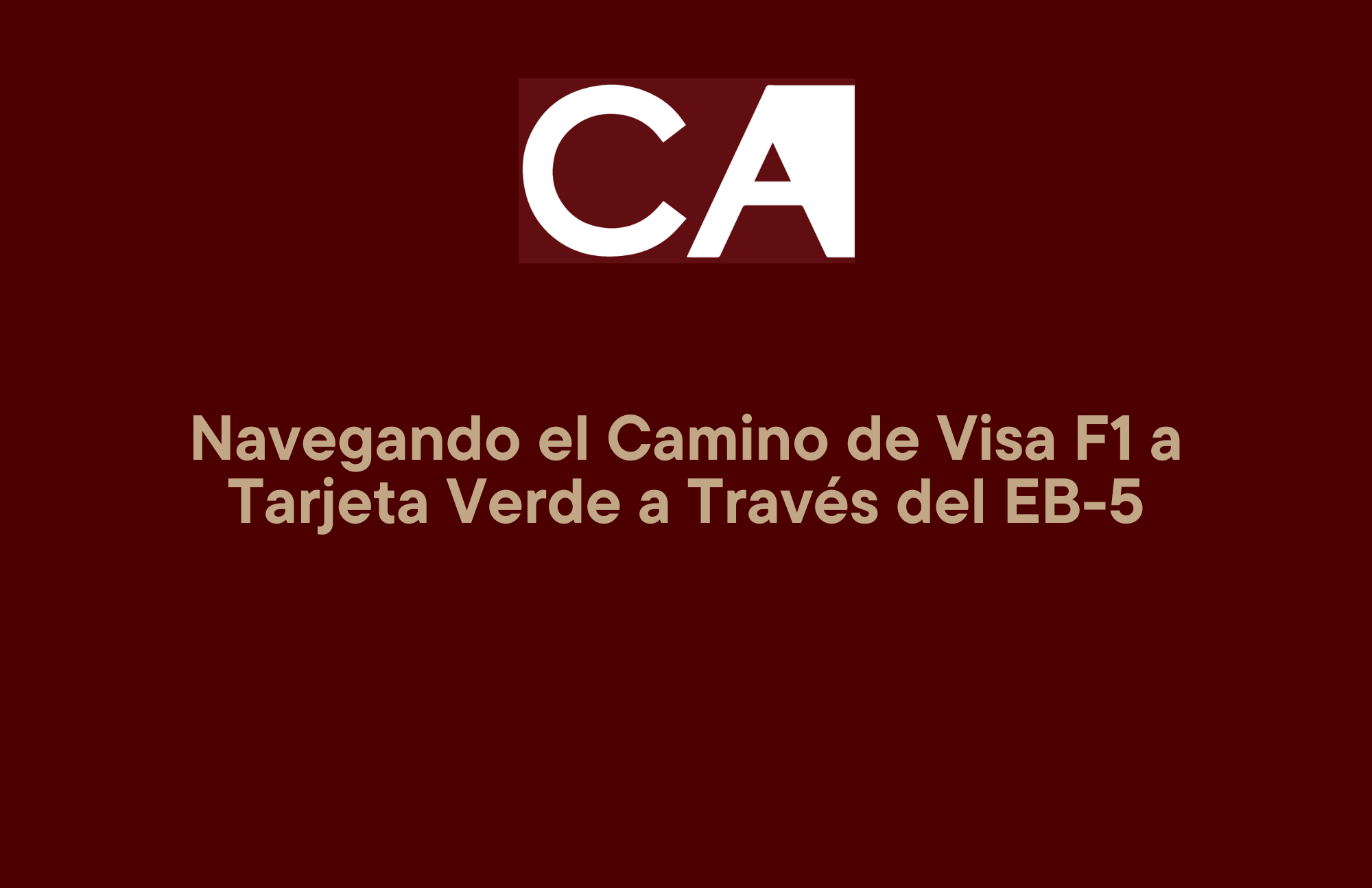EB-5 versus EB-2
In a recent webinar, CanAm and Isabella Comprido, Immigration Attorney at Arce Immigration Law, discussed the key differences between the EB-5 and E-2 visas, two popular options for those looking to live and work in the United States. The conversation aimed to clarify the distinctions between immigrant and non-immigrant visas, the benefits of obtaining a green card, and the advantages of temporary residency based on investment.
You can watch their full discussion here. In this blog post, we discuss some of the essential points covered in their discussion.
Immigrant vs. Non-Immigrant Visas: What’s the Difference?
Non-immigrant visas, such as tourist visas, student visas, and business visas, are temporary and do not directly lead to permanent residency in the U.S. These visas are intended for individuals who plan to stay in the U.S. temporarily, whether for work, study, or other specific purposes. Common non-immigrant visas include:
- Tourist Visa (B1/B2): Allows individuals to visit the U.S. for tourism or business meetings for up to six months.
- Student Visa (F1): Allows individuals to study at a U.S. college, university, or language program.
- Work Visas (H1B, L1): Allows individuals to work in the U.S. for a specific employer.
On the other hand, immigrant visas are designed for individuals who wish to live permanently in the United States. These visas lead to a green card, allowing holders to live and work anywhere in the U.S. without restrictions. The most common types of immigrant visas include:
- Family-Based Visas: For individuals sponsored by a U.S. citizen or permanent resident relative.
- Employment-Based Visas (EB-1, EB-2, EB-3, EB-4, EB-5): For individuals sponsored by a U.S. employer or through significant investment in the U.S. economy.
What is the E-2 Visa?
The E-2 visa is a non-immigrant visa specifically for investors from countries that have a trade treaty with the United States. This visa allows individuals to enter the U.S. to direct and develop a business in which they have invested a substantial amount of capital. The E-2 visa does not have a minimum investment requirement; however, most immigration attorneys recommend investing at least $100,000 to demonstrate a genuine intent to develop a successful business.
Key characteristics of the E-2 visa include:
- Active Investment: The investor must be actively involved in the management of the business. This could mean managing day-to-day operations or overseeing its growth and development.
- No Minimum Investment Amount: While there is no minimum required investment, it must be considered substantial relative to the business type. The investment should not be marginal; it must have the capacity to generate more than enough income to provide a minimal living for the investor and their family.
- Temporary Residency: The E-2 visa is generally issued for up to two years, but it can be renewed indefinitely as long as the business remains operational and meets the visa requirements. However, the visa does not directly lead to a green card or permanent residency.
Brazilian nationals with dual Portuguese citizenship apply for the E-2 visa, thanks to Portugal’s trade treaty with the U.S. This has opened up new opportunities for many Brazilian investors looking to establish a business presence in the United States.
What is the EB-5 Visa?
The EB-5 visa is an immigrant visa that provides a direct path to a U.S. green card for investors who make a substantial financial investment in a new commercial enterprise in the United States that creates at least ten full-time jobs for U.S. workers. This program is attractive to investors who are looking for a more permanent residency option.
Key characteristics of the EB-5 visa include:
- Substantial Investment Requirement: The minimum investment required for the EB-5 program is $800,000 if the investment is made in a targeted employment area (TEA), which includes rural areas or regions with high unemployment. Otherwise, the minimum investment amount is $1,050,000.
- Passive Investment: Unlike the E-2 visa, the EB-5 program allows for passive investment. This means that investors do not need to be actively involved in managing the day-to-day operations of the business. Instead, they can invest through a regional center, which handles the project’s management and compliance requirements.
- Permanent Residency: Successful EB-5 investors receive a conditional green card valid for two years. After two years, investors must prove that their investment has created the required jobs and remains at risk to have the conditions removed and receive a permanent green card valid for ten years. After five years, they may apply for U.S. citizenship.
Comparing the E-2 and EB-5 Visas
When deciding between the E-2 and EB-5 visas, investors should consider several factors, including their long-term goals, investment capacity, and willingness to actively manage a business in the U.S.
- Residency Status: The E-2 visa provides temporary residency, while the EB-5 visa offers a direct path to permanent residency.
- Investment Requirements: The EB-5 visa requires a higher investment amount and has specific job creation requirements, whereas the E-2 visa does not have a set minimum investment amount.
- Business Involvement: The E-2 visa requires active participation in the business, while the EB-5 visa allows for a more passive investment.
Conclusion: Choosing the Right Visa Pathway
Deciding between the E-2 and EB-5 visas depends on the investor’s personal and financial goals. The E-2 visa is suitable for those looking for a flexible, temporary residency option tied to active business management. In contrast, the EB-5 visa is ideal for investors seeking a more straightforward path to a U.S. green card through a substantial financial investment in the U.S. economy.
It is important to consult with an experienced immigration attorney to explore the best options for your unique situation. By understanding the requirements and benefits of each visa type, investors can make informed decisions that align with their goals for living and working in the United States.


